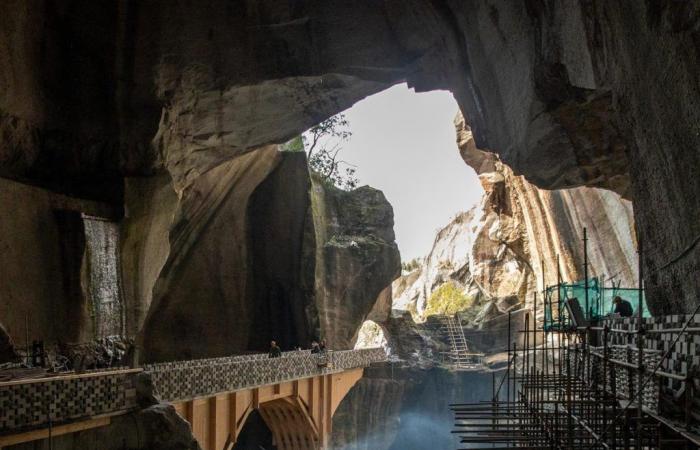CThis is currently taking place in China, but could well resonate here. At the helm of this project, which began a year ago, is the Chinese architect Xu Tiantian, born in 1975. Distinguished by the prestigious Swiss Architectural Award 2022, this native of Fujian (south-east coast of China, facing the island of Taiwan) founded her agency DnA Design and Architecture in 2004 in Beijing.
Remote areas
“At the time,” contextualizes Wenwen Cai, curator and project manager at Arc en rêve, an architecture center, “China was in full economic boom, but few architects were interested in rural spaces; the majority of attention was focused on urban development and the expansion of metropolises to meet the growing needs of the urban population and industry.” From the beginning, Xu Tiantian took another stance: to focus on remote areas, then in the blind spot of Chinese politics.
The tofu region
It was in Songyang, a mountainous region far from major cities, that she developed her first projects. In the village of Caizhai, renowned for its tofu, but whose production in traditional family workshops does not meet food certification standards, the architect designed a building for producers of this commodity. The latter combines a shared manufacturing workshop and a circuit for visitors, allowing them to observe the traditional production process before tasting the tofu produced on site. Another feat: the transformation of the old bridge in the village of Shimen into a hybrid public space combining a pedestrian connection between two villages, a belvedere, a place for relaxation or occasional events such as markets.
“It was with her first projects that Xu Tiantian forged her approach, which she called “architectural acupuncture”. For her, each place, no matter how remote or poor, contains a wealth to be discovered and revealed through architecture, which acts as a lever,” explains Wenwen Cai.
DNA Design and Architecture
The project combines a shared manufacturing workshop and a tour for visitors.
The project currently being carried out by the Chinese architect in the vast abandoned quarries of Huangyan, on the east coast of China, is a new application of this. “The site had been abandoned since the 1980s. The local authorities were concerned because the city had developed and expanded to the foot of this quarry, which was now integrated into the urban fabric,” says Wenwen Cai.
DNA Design and Architecture
The project currently being carried out by the Chinese architect in the vast abandoned quarries of Huangyan.
The development project initiated a year ago by Xu Tiantian covers 20,000 square meters of these disused spaces. It functions as a walking area through the rock walls of the quarries. This public space, punctuated by natural light wells, will be used by the local community for cultural and recreational activities (including a café, library, diving area, places of contemplation, etc.). Presented at Arc en rêve with the support of large immersive or detailed models, technical drawings and a video, this magnificent project should be completed at the end of the summer. It offers the opportunity, on a local scale, to question the future of the approximately 1,400 quarries listed in Gironde.
“Stone voids” until October 27, Arc en rêve, architecture center, 7, rue Ferrère, Bordeaux. Every day except Monday, from 11 a.m. to 6 p.m. 4.50-8 euros. www.arcenreve.eu






